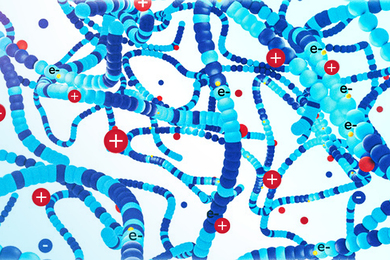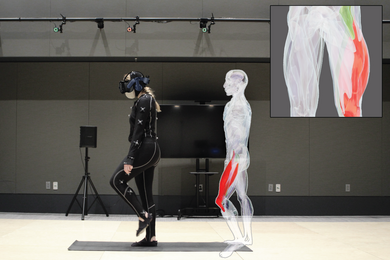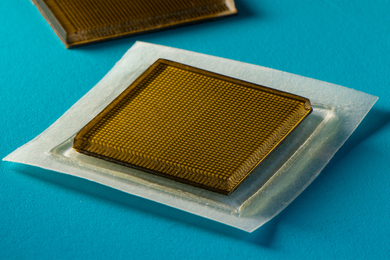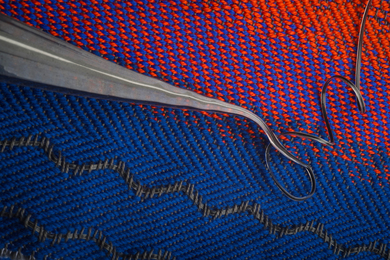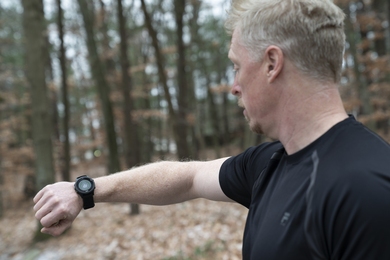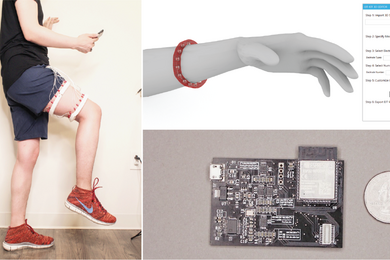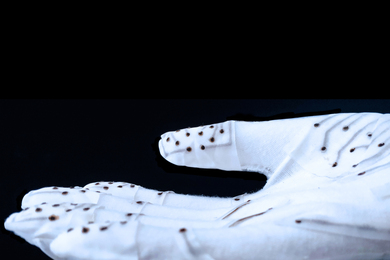New polymers could enable better wearable devices
MIT engineers developed organic polymers that can efficiently convert signals from biological tissue into the electronic signals used in transistors.
MIT system “sees” the inner structure of the body during physical rehab
A system for monitoring motion and muscle engagement could aid the elderly and athletes during unsupervised physical rehabilitation for injuries or impaired mobility.
MIT engineers develop stickers that can see inside the body
New stamp-sized ultrasound adhesives produce clear images of heart, lungs, and other internal organs.
Smart textiles sense how their users are moving
Researchers develop a comfortable, form-fitting fabric that recognizes its wearer’s activities, like walking, running, and jumping.
Engineers build Lego-like artificial intelligence chip
The new design is stackable and reconfigurable, for swapping out and building on existing sensors and neural network processors.
A fabric that “hears” your heart's sounds
Inspired by the human ear, a new acoustic fabric converts audible sounds into electrical signals.
New device detects heat strain in military trainees
In the intensity of basic training, a smartwatch-based system warns recruits when they are at risk of heat injury.
Deploying machine learning to improve mental health
MIT scientist Rosalind Picard collaborates with clinicians to develop tools for mental health care delivery.
Making health and motion sensing devices more personal
An electrical impedance tomography toolkit lets users design and fabricate health and motion sensing devices.
360-degree transparency for construction sites made simple
Jeevan Kalanithi SM ’07 is CEO of OpenSpace, a company founded by three Media Lab graduates using computer vision to benefit the construction industry.
Inflatable robotic hand gives amputees real-time tactile control
Prosthetic enables a wide range of daily activities, such as zipping a suitcase, shaking hands, and petting a cat.
This touchy-feely glove senses and maps tactile stimuli
The design could help restore motor function after stroke, enhance virtual gaming experiences.
Sweat-proof “smart skin” takes reliable vitals, even during workouts and spicy meals
The design could lead to conformable wearable monitors to track skin cancer and other conditions.
Q&A: Valencia Joyner Koomson ’98, MNG ’99 on new possibilities in microelectronic health systems
MLK Visiting Scholar focuses on microelectronics for cell analysis and biomedical applications.

